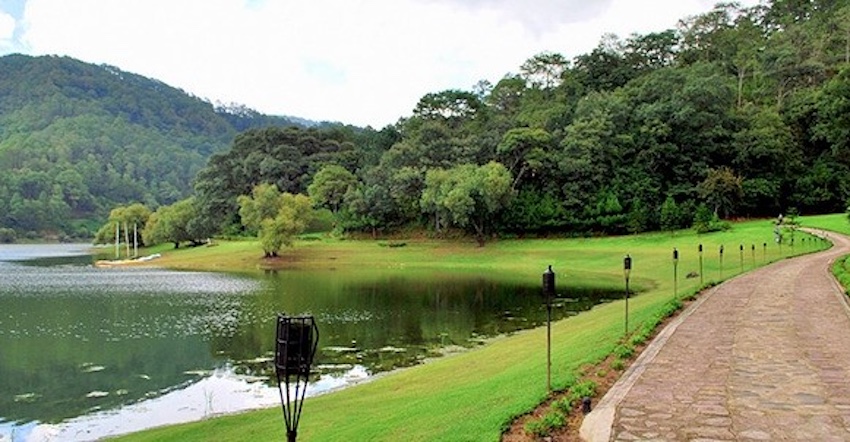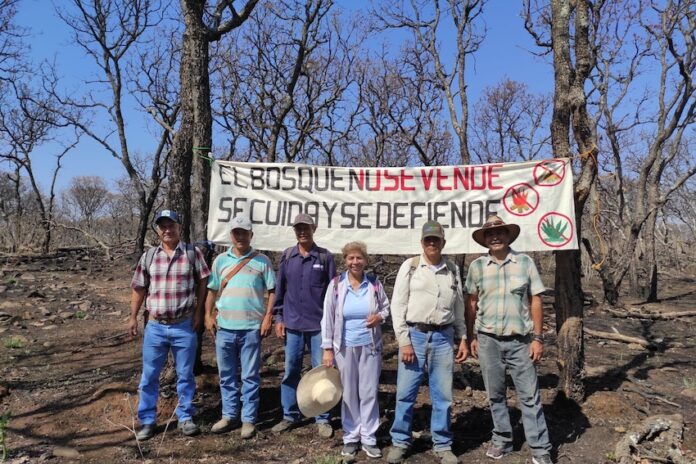In the small town of Juanacatlán, south of the city of Guadalajara, Jalisco, a group of local activists is turning to a Japanese gardening technique to fight back environmental pollution. The goal is to transform 4,000 square meters into a thick forest by planting over 12,000 trees.
Dubbed the Forest of the End of the World, the project takes inspiration from the idea of how nature will regenerate itself once humans are no longer here.

“As things progress, we believe it will be haphazard, featuring a mix of native species. Some areas will have pockets of trees, while others will have clearings. Other areas will have some paths for animals,” founder of the project Enrique Enciso Rivera said.
Rivera explained that the forest follows the Miyawaki method, a reforestation technique developed by Japanese botanist Akira Miyawaki (1928-2021), which mimics the natural regeneration of native forests. One of its features is the planting of trees very close together to encourage high density and vertical growth. Forests created with the Miyawaki method grow up to ten times faster and are thirty times denser than conventional forests, fostering resilient ecosystems rich in biodiversity.
Activists have planted trees following this spontaneous approach. Prickly pear cactus trees appear in one section, while just a few meters away, these are interspersed with pulque magueys and pitayas, creating the feeling of a desert fragment among the lush greenery. Further back, other trees are arranged in circular patterns.
The trees used for reforestation come from seeds collected in the nearby hills. The seeds were germinated in the Juan Rivera community nursery in El Salto – a small city near Juanacatlán – before being transported to the forest.
Through this gardening technique, Rivera hopes for the forest to reach the proportions and characteristics of a 100-year-old forest. This would help to combat pollution due to the region’s proximity to the Santiago river, one of the most contaminated rivers in the country.
“I wanted this space to be a lung for the town, and to be a lung, you need a lot of oxygen,” Rivera said.
View this post on Instagram
Since February, several organizations have sent people to help prepare the land and plant trees. These organizations include: the collective Un Salto de Vida, to which Rivera belongs, students from National College of Professional Technical Education (CONALEP), the National Commission for the Protection of Indigenous Peoples, the Observatory on Socio-Environmental Conflicts and Defense of Activists at the University of Guadalajara (UdeG).
So far, activists have planted around 1,200 trees. As they continue to plant more, they need to care for and monitor the new trees during their first three years, as this period is crucial for their survival.
“After three years, once the trees have established their roots, they will retain moisture and withstand drought. The big challenge is helping them take root, which is why we monitor them,” Rivera explained.
Rivera, 67, has lived all his life in El Salto. He’s dedicated at least 30 years to denouncing the pollution in the region, a fight he has passed on to his daughter Sofia Enciso Gonzalez, and grandchildren.
Along with students from CONALEP, Sofía has installed rectangular vegetable beds among the trees, where they grow beets, lettuce, celery, chilies, and aromatic herbs such as oregano and thyme. With her children, they observe and document and identify the animals and plants in the area on the iNaturalist app. Together they take photographs of fireworms, spiders, grasshoppers, and crickets to keep a record of the insects that now live in the forest.
Gabriela Solis is a Mexican lawyer turned full-time writer. She was born and raised in Guadalajara and covers business, culture, lifestyle and travel for Mexico News Daily. You can follow her lifestyle blog Dunas y Palmeras.
